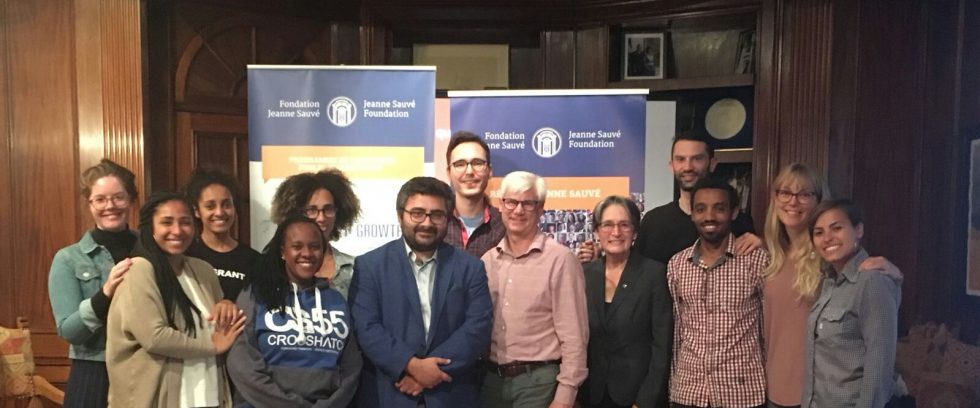
A report by Sauvé Fellow Semuhi Sinanoğlu
On 3rd of October, JSF fellows came together to discuss the topic of social inclusion of refugees & immigrants. The JSF fellows also hosted two distinguished speakers, Mr. Paul Clarke, the Executive Director of Action Réfugiés Montréal, and Mrs. Denise Otis, a Legal Officer for the United Nations High Commissioner for Refugees.
This short blog post aims to provide an overview of the action-oriented discussions and highlight some of the issues that emerged. This overview is not claimed to be an all-encompassing, exhaustive summary.
The Impact of Storytelling
Storytelling is a powerful tool to rely on for tackling rising xenophobia in the receiving countries against refugees & immigrants. When refugees are given a chance to narrate their stories, this helps and empowers them to recover, especially in the aftermath of dangerous journeys they need to commute to reach receiving countries.
Be that as it may, empathy is political. People do not react to all kinds of atrocities, calamities in the same way, to the same degree. Through story-telling practices, activists aim to reach out and appeal to the citizens of receiving countries to render them more empathetic to the unbearable conditions refugees live in. The political nature of empathy usually puts constraints on these efforts. And, unfortunately, these storytelling acts problematically prioritize ‘model/ideal’ refugees/immigrants, who are supposed and ‘expected’ to contribute to the national economy and portrayed ‘appropriately’ for the ‘white man.’
Given the extent of the humanitarian crises in different parts of the world, it is extremely vital to elicit political and financial support from developed countries, primarily Western democratic countries, to intervene and take action. Hence, storytelling acts that portray these ‘model/ideal’ refugees serve a purpose, but it is one thing to ask the international community for moral and legal responsibility to protect, another thing to indulge white savior pathology.
According to the UNHCR data, top hosting countries for refugees are Turkey, Pakistan, Lebanon, Iran, Uganda, and Ethiopia, all of which are less-developed countries. Without any doubt, developed countries such as Canada can be more receptive to the refugees given their higher absorption capacities.
What Can Be Done?
Some of the fellows proposed the idea of ‘community hubs’ for refugees & immigrants, inspired by church’s capacity for resettlement thanks to their multi-purpose for local communities. These community hubs do not necessarily have to be designed as business-oriented/entrepreneurial hubs/incubators, but spaces where refugees can tell their stories, find different kind of resources that will help them in the process of integration, and network with other people from diverse backgrounds.
One crucial aspect of social inclusion of refugees is the issue of skills development. There are different applications/websites available that provide free and easy access to education, but their transferability & equivalency of their credentials are open to dispute. We need to capitalize on technological advancement and utilize mobile applications to offer different resources, especially regarding educational attainment. However, technology should not be a leeway for avoiding our real structural problems, and pretext for not offering long-term solutions such as scholarships for university admissions. It would also be harmful to establish refugee-only universities because it would only exacerbate xenophobia in hosting countries. Existing schools can play an essential role in leveling credentials for refugees since the lack of equivalency in university degrees and occupations renders their employment in the formal labor markets extremely difficult.
